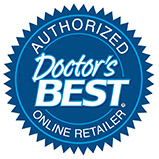|
|||||||||||||||||||||||||||||
|
Yeast Gone Wild
by Carolyn Dean, M.D., N.D. You may have been trying for years to resolve chronic health symptoms and, yet, still not realized that one of the undiagnosed triggers might be yeast overgrowth. WHAT IS YEAST? Candida albicans is a fungus living in our intestines that produces 180 chemical toxins capable of making you feel dizzy and fatigued, shutting down your thyroid, throwing your hormones off balance, and causing you to crave sugar and alcohol and gain weight. Candida and its by-products are associated with symptoms of PMS, loss of libido, painful intercourse, infertility, numbness, tingling, multiple sclerosis (MS), Crohn's, colitis, irritable bowel, acne, lupus, insomnia, drowsiness, white tongue, bad breath, body odor, sinusitis, bruising, sore throat, bronchitis, shortness of breath, heart palpitations, spots in front of eyes, and dozens more symptoms. Yeast overgrowth is primarily caused by overuse of antibiotics that kill bacteria, both good and bad, wiping out the intestinal flora. Another overlooked cause is mercury fillings, which can be inhaled and swallowed in the process of chewing and act like an antibiotic in the intestines. Once yeast has the room to expand, a diet high in sugar, simple carbohydrates, and fermented foods feed their ravenous hunger and corticosteroids, estrogen, and birth control pills further encourage its growth. LEAKY GUT: AN OPEN DOOR TO OUR TISSUES In the absence of competition, yeast colonies grow into all the empty nooks and crannies of the large and, possibly, small intestine. It is a scientific fact that when yeast cells reach a certain critical mass, they change from round buds to a thread-like invasive tissue. They are running out of food, so they pack their bags and emigrate to the small intestine from the large intestine looking for more. In the small intestine, the yeast threads poke microscopic holes in the intestinal lining. Such a phenomenon is called "leaky gut"—where a compromised gut lining essentially becomes a superhighway of toxins to the blood stream because there is nothing to block their flow. Instead of absorbing life-giving nutrients, a nowpermeated intestinal wall allows all 180 of yeast's chemical by-products, as well as undigested food molecules, bacterial toxins, and other chemicals to take a one-way ride straight into the blood. Though the holes are not necessarily big enough to allow the yeast to get into the blood, the bloodstream is now carrying hundreds of waste products from head to toe. YEAST AND INFLAMMATION When yeast, bacteria, and food toxins hit the blood stream, they trigger widespread inflammatory reactions by either directly attacking tissues or creating allergic reactions along with the production of histamine, which causes immune cells to react. Some of the yeast toxins, like acetaldehyde, alcohol, zymosan, arabinitol, and gliotoxin, have been named by mycologists (biologists who study fungi), but rarely do they extend their discussion to the human suffering caused by these toxins. Acetaldehyde is produced when yeast digests sugar. It is a particularly potent toxin that can damage all bodily tissue, including the brain. It is also produced when you drink alcohol, breathe exhaust from cars, and smoke cigarettes. What most people don't know is that yeast also produces alcohol in the body—enough to make some people feel drunk and give a positive reading on a breathalyzer test. Most people with yeast overgrowth can't touch alcohol because it makes them feel so rotten. Weight gain is a very common result of yeast overgrowth. Our bodies retain pounds of fluid in an attempt to dilute the inflammatory toxins that yeast produces. Over time, tissue toxins and fluid build-up lead to cellulite and weight gain. The gas produced by yeast can cause abdominal bloating that can increase your waist size up to 6 inches from one meal to the next. THE YEAST QUESTIONS Positive answers to most of these questions may mean you have yeast overgrowth. 1. Have you taken several courses of antibiotics in the past? 2. Have you been on the birth control pill? 3. Do you react to the smell of damp, moldy places? 4. Do you crave sugar and bread? 5. Do you feel drained to the point of exhaustion? 6. Do you have symptoms of intestinal gas, bloating, and cramping (IBS)? 7. Are you troubled by constant vaginal infections? 8. Are you bothered by itchy burning eyes? WHERE'S THE CURE? The treatment for yeast does not lie in a pharmaceutical as many women have learned. Even if your doctor is one of the few that does recognize yeast overgrowth, the most common treatment recommended is a week or two of antifungal medications. Most doctors don't understand that yeast overgrowth requires a change in diet, probiotics, and antifungal supplements and/or medications.
|
|
|||||||||||||||||||||||||||













